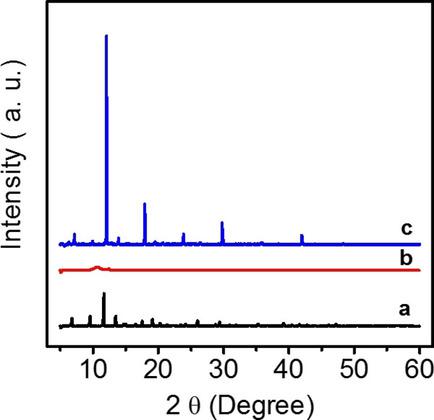当前位置:
X-MOL 学术
›
Electroanalysis
›
论文详情
Our official English website, www.x-mol.net, welcomes your
feedback! (Note: you will need to create a separate account there.)
Voltammetric Sensing of Caffeine in Food Sample Using Cu‐MOF and Graphene
Electroanalysis ( IF 2.7 ) Pub Date : 2020-11-22 , DOI: 10.1002/elan.202060488 A. Venkadesh 1, 2 , J. Mathiyarasu 1, 2 , S. Radhakrishnan 1, 2
Electroanalysis ( IF 2.7 ) Pub Date : 2020-11-22 , DOI: 10.1002/elan.202060488 A. Venkadesh 1, 2 , J. Mathiyarasu 1, 2 , S. Radhakrishnan 1, 2
Affiliation

|
Cu‐MOF/graphene composite were obtained by solvothermal and electrochemical methods. The interaction and formation of Cu‐MOF/graphene (GE) composite was systematically studied with the support of various characterizations including X‐ray diffraction (XRD), field emission scanning electron microscopy (FE‐SEM) and cyclic voltammogram (CV). The Cu‐MOF/graphene composite coated glassy carbon (GC) electrode exhibited good catalytic performance towards the electro‐oxidation of caffeine in neutral condition. The modified electrode displayed good linear range (5 μM to 450 μM), sensitivity (0.710 μA μM−1 cm−2), detection limit (1.38 μM), selectivity, high stability and reproducibility. Finally, the fabricated electrode extended into successful detection of caffeine in tea and coffee samples with good recoveries.
中文翻译:

使用Cu-MOF和石墨烯的伏安法测定食品中的咖啡因
Cu-MOF /石墨烯复合材料是通过溶剂热和电化学方法获得的。在各种表征的支持下,系统地研究了Cu-MOF /石墨烯(GE)复合物的相互作用和形成,包括X射线衍射(XRD),场发射扫描电子显微镜(FE-SEM)和循环伏安图(CV)。Cu-MOF /石墨烯复合涂层玻璃碳(GC)电极在中性条件下对咖啡因的电氧化表现出良好的催化性能。修饰电极显示出良好的线性范围(5μM至450μM),灵敏度(0.710μAμM -1 cm -2)),检测限(1.38μM),选择性,高稳定性和重现性。最终,制成的电极扩展到成功检测茶叶和咖啡样品中咖啡因的回收率高的领域。
更新日期:2020-11-22
中文翻译:

使用Cu-MOF和石墨烯的伏安法测定食品中的咖啡因
Cu-MOF /石墨烯复合材料是通过溶剂热和电化学方法获得的。在各种表征的支持下,系统地研究了Cu-MOF /石墨烯(GE)复合物的相互作用和形成,包括X射线衍射(XRD),场发射扫描电子显微镜(FE-SEM)和循环伏安图(CV)。Cu-MOF /石墨烯复合涂层玻璃碳(GC)电极在中性条件下对咖啡因的电氧化表现出良好的催化性能。修饰电极显示出良好的线性范围(5μM至450μM),灵敏度(0.710μAμM -1 cm -2)),检测限(1.38μM),选择性,高稳定性和重现性。最终,制成的电极扩展到成功检测茶叶和咖啡样品中咖啡因的回收率高的领域。











































 京公网安备 11010802027423号
京公网安备 11010802027423号